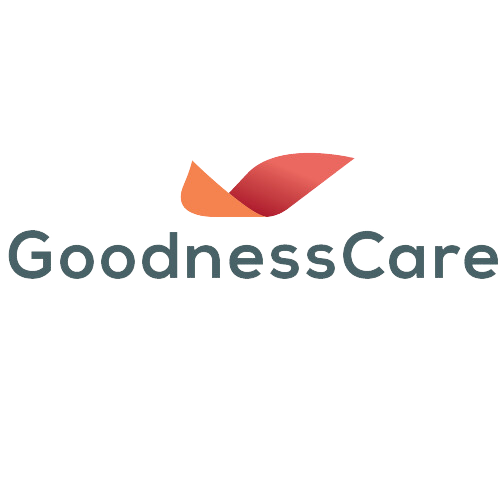Understanding the industry structure of the pharmaceutical sector is crucial for individuals aspiring to become pharmaceutical distributors or agents. This knowledge provides a comprehensive understanding of the various stakeholders, their roles, and the dynamics that influence the distribution and availability of pharmaceutical products. Here is an elaborate breakdown of the industry structure, including key players, their roles, and the dynamics that shape the pharmaceutical supply chain:
1. Pharmaceutical Manufacturers
Pharmaceutical manufacturers are the cornerstone of the industry, responsible for researching, developing, and producing a wide range of medicinal products, including prescription drugs, over-the-counter medications, vaccines, and medical devices. These companies invest heavily in research and development (R&D) to discover new drugs, improve existing formulations, and ensure product safety and efficacy. They adhere to stringent regulatory guidelines and quality standards during manufacturing to deliver high-quality pharmaceutical products to the market.
- Research and Development (R&D): Pharmaceutical manufacturers are at the forefront of medical innovation, investing significantly in research and development (R&D) to discover novel drugs, enhance existing formulations, and address unmet medical needs. The R&D phase involves rigorous testing, clinical trials, and regulatory approvals, ensuring that the developed products meet stringent safety and efficacy standards. Manufacturers often collaborate with academic institutions, research organizations, and healthcare professionals to advance scientific knowledge and bring groundbreaking therapies to the market.
- Product Diversity: Pharmaceutical manufacturers produce a diverse range of medical products, including prescription drugs, over-the-counter medications, vaccines, and medical devices. This diversity caters to various therapeutic areas, patient populations, and healthcare needs. Manufacturers continuously strive to expand their product portfolios, providing healthcare providers comprehensive treatment options for different conditions and diseases.
- Regulatory Compliance: Adhering to strict regulatory guidelines is paramount for pharmaceutical manufacturers. Regulatory bodies, such as the Food and Drug Administration (FDA) in the United States and the European Medicines Agency (EMA) in Europe, impose stringent standards for drug development, manufacturing processes, and product quality. Manufacturers undergo rigorous inspections and audits to ensure compliance with Good Manufacturing Practices (GMP) and other regulatory requirements, guaranteeing the safety and efficacy of their pharmaceutical products.
- Global Supply Chains: Many pharmaceutical manufacturers operate on a global scale, with supply chains that span multiple countries. This global presence allows them to reach diverse markets and populations. However, managing global supply chains involves addressing logistical challenges, regulatory variations, and cultural considerations. Manufacturers employ sophisticated supply chain management strategies to ensure their products’ efficient production, distribution, and availability globally.
- Innovation in Manufacturing Technologies: Advancements in manufacturing technologies play a crucial role in the pharmaceutical industry. Manufacturers adopt cutting-edge technologies, such as continuous manufacturing, advanced automation, and data analytics, to improve production efficiency, reduce costs, and enhance product quality. These innovations contribute to streamlining manufacturing processes, minimizing environmental impact, and ensuring a reliable supply of pharmaceutical products to meet global healthcare demands.
- Quality Assurance and Control: Quality assurance is a cornerstone of pharmaceutical manufacturing. Manufacturers implement robust quality control measures throughout production, from raw material sourcing to the final product. Quality control laboratories conduct thorough testing to verify pharmaceutical products’ identity, purity, and potency. This commitment to quality ensures that healthcare providers and patients receive medications that meet the highest standards of safety and effectiveness.
2. Distributors
Pharmaceutical distributors are pivotal in bridging the gap between manufacturers and healthcare providers, including hospitals, clinics, pharmacies, and other healthcare facilities. These entities are responsible for procuring pharmaceutical products from manufacturers and ensuring their timely and efficient distribution to the designated points of care. They manage complex supply chain logistics, including warehousing, inventory management, and transportation, to ensure the seamless delivery of medications and healthcare products to end consumers.
- Procurement and Sourcing: Distributors are responsible for procuring pharmaceutical products from manufacturers, ensuring a diverse and comprehensive inventory to meet the varied needs of healthcare providers. They negotiate strategically with manufacturers to secure favorable terms, pricing structures, and contractual agreements, optimizing the procurement process for both parties.
- Supply Chain Logistics: Managing complex supply chain logistics is a core competency of pharmaceutical distributors. This includes warehouse management, inventory control, and transportation logistics. Distributors employ advanced technologies, such as warehouse automation and inventory tracking systems, to streamline operations and minimize the risk of product stockouts or delays. They implement best practices in cold chain management for temperature-sensitive products, ensuring the integrity of medications during transit and storage.
- Order Fulfillment: Distributors ensure timely and accurate order fulfillment, a critical aspect of meeting the demands of healthcare providers. They collaborate closely with manufacturers to anticipate product demand, optimize inventory levels, and expedite the delivery of pharmaceutical products to various points of care, including hospitals, clinics, pharmacies, and other healthcare facilities.
- Regulatory Compliance: Adherence to regulatory guidelines is paramount for pharmaceutical distributors. They navigate complex regulatory frameworks governing the distribution of pharmaceutical products, ensuring compliance with Good Distribution Practices (GDP), licensing requirements, and product traceability standards. Distributors undergo regular audits and inspections to maintain the highest quality and safety standards throughout distribution.
- Customer Relationship Management: Building and maintaining strong relationships with healthcare providers is a key function of pharmaceutical distributors. They work closely with healthcare professionals to understand their needs, preferences, and inventory requirements. Effective communication and collaboration with healthcare providers contribute to a seamless and responsive supply chain, enhancing the overall efficiency of pharmaceutical distribution.
- Market Intelligence and Forecasting: Distributors engage in market intelligence activities, continuously monitoring industry trends, demand patterns, and healthcare market dynamics. By leveraging data analytics and market research, they can anticipate shifts in product demand, respond proactively to emerging healthcare trends, and optimize inventory levels. This strategic approach ensures that pharmaceutical products are readily available to meet the evolving needs of healthcare providers and patients.
- Risk Management: Distributors actively manage risks associated with the distribution process. This includes addressing challenges such as product recalls, regulatory changes, and unforeseen disruptions to the supply chain. Implementing robust risk management strategies and contingency plans allows distributors to mitigate potential disruptions and maintain a reliable supply of pharmaceutical products, contributing to the overall resilience of the pharmaceutical distribution ecosystem.
- Collaboration with Wholesalers and Retailers: Distributors collaborate with wholesalers to facilitate the bulk purchase and distribution of pharmaceutical products to retailers. This collaboration ensures a seamless flow of products from manufacturers to retailers, optimizing the efficiency of the pharmaceutical supply chain. Distributors also work closely with retailers, providing support in inventory management, order fulfillment, and addressing specific product needs based on consumer demand.
3. Wholesalers
Wholesalers operate as intermediaries between pharmaceutical manufacturers and retailers, facilitating the bulk purchase and distribution of pharmaceutical products. They often work closely with distributors to streamline the procurement process and provide retailers with diverse pharmaceutical products at competitive prices. Wholesalers are vital in ensuring product availability and accessibility, particularly for smaller healthcare providers and pharmacies that may not have direct access to pharmaceutical manufacturers.
- Bulk Purchasing and Inventory Management: Wholesalers purchase bulk pharmaceutical products from manufacturers, enabling economies of scale. This strategic procurement allows them to negotiate favorable pricing, terms, and conditions, optimizing the cost-efficiency of the distribution process. Wholesalers meticulously manage their inventory, balancing the need for a diverse product range with cost-effective storage solutions to meet the varying demands of retailers.
- Facilitating Distribution to Retailers: Collaborating closely with distributors and wholesalers is pivotal in ensuring the seamless distribution of pharmaceutical products to retailers. Acting as intermediaries, they streamline retailers’ procurement process, providing them access to a wide range of pharmaceutical products. Wholesalers contribute to the accessibility of medications for retailers, particularly smaller pharmacies and healthcare providers who may not have direct relationships with manufacturers.
- Strategic Pricing and Negotiation: Wholesalers employ strategic pricing and negotiation techniques to create a competitive advantage in the market. They work to establish mutually beneficial relationships with both manufacturers and retailers. By offering competitive prices to retailers, wholesalers contribute to the affordability of pharmaceutical products for end consumers, fostering a balanced and accessible pharmaceutical market.
- Product Information and Support: Wholesalers serve as valuable sources of product information and support for retailers. They provide detailed information about pharmaceutical products, including specifications, usage guidelines, and potential benefits. Additionally, wholesalers offer support in addressing retailers’ inquiries, managing orders, and ensuring that retailers can access the necessary resources to make informed decisions about their product inventory.
- Logistical Efficiency: Wholesalers optimize logistical efficiency to ensure timely and accurate delivery of pharmaceutical products to retailers. This includes employing advanced logistics and distribution technologies, such as real-time tracking systems and route optimization, to streamline the transportation of products. By prioritizing efficiency, wholesalers contribute to reducing lead times, minimizing stockouts, and maintaining a reliable supply chain for retailers.
- Compliance with Regulatory Standards: Adhering to regulatory standards is fundamental to the wholesaler’s role. They navigate and comply with regulatory requirements governing the wholesale distribution of pharmaceutical products. This includes adherence to Good Distribution Practices (GDP), licensing regulations, and other quality assurance protocols. Wholesalers undergo regular audits and inspections to ensure that their operations align with the highest standards of safety and integrity.
- Collaboration with Manufacturers and Distributors: Wholesalers establish collaborative relationships with pharmaceutical manufacturers and distributors. By fostering strong connections with manufacturers, wholesalers gain access to a diverse product range, ensuring that they can meet the varied needs of retailers. Collaboration with distributors enhances the efficiency of the distribution process, creating a cohesive network that supports the flow of pharmaceutical products from manufacturing facilities to end retailers.
- Market Insights and Trends: Wholesalers actively monitor market insights and trends to stay abreast of evolving consumer preferences, regulatory changes, and industry dynamics. By analyzing market data, wholesalers can anticipate shifts in demand, enabling them to adjust their product offerings and inventory levels accordingly. This strategic approach contributes to the adaptability of the pharmaceutical supply chain.
4. Retailers
Retailers in the pharmaceutical industry encompass a broad spectrum of entities, including independent pharmacies, chain pharmacies, online pharmacies, and healthcare retailers. These entities serve as the final touchpoint in the pharmaceutical supply chain, offering pharmaceutical products directly to consumers. Retailers focus on providing personalized healthcare services, medication counseling, and over-the-counter products to meet the diverse healthcare needs of their customers. They often collaborate with wholesalers and distributors to maintain a comprehensive product inventory and ensure timely access to essential medications and healthcare supplies.
- Diverse Retail Formats: The pharmaceutical retail landscape encompasses diverse formats, including independent pharmacies, chain pharmacies, online pharmacies, and healthcare retailers. Each format caters to specific consumer preferences and needs. Independent pharmacies often focus on community engagement and personalized services, while online pharmacies leverage digital platforms for convenient access. With their widespread presence, chain pharmacies offer a mix of convenience and a broad product range, contributing to the accessibility of pharmaceutical products.
- Patient-Centric Services: Retailers prioritize patient-centric care by offering services beyond simply dispensing medications. Many pharmacies provide medication counseling, health consultations, and personalized wellness programs. By fostering a patient-centric approach, retailers contribute to improved medication adherence, better health outcomes, and enhanced overall consumer well-being.
- Collaboration with Wholesalers: Retailers maintain close partnerships with wholesalers to ensure a consistent supply of pharmaceutical products. Collaborating with wholesalers enables retailers to access a range of products, manage inventory effectively, and respond to dynamic market demands. This collaboration contributes to the efficient flow of pharmaceutical products from manufacturers to end consumers.
- Regulatory Compliance: Adherence to regulatory standards is a fundamental aspect of the retailing process in the pharmaceutical industry. Retailers comply with regulatory requirements governing the sale and dispensing of pharmaceutical products, ensuring adherence to Good Pharmacy Practice (GPP) and other relevant guidelines. This commitment to compliance guarantees the safety and quality of products provided to consumers.
- Inventory Management: Retailers manage meticulous inventory to optimize product availability and reduce stockouts. Advanced inventory management systems help retailers monitor product levels, track expiration dates, and efficiently reorder stock. By maintaining a well-managed inventory, retailers ensure that consumers can access a comprehensive range of pharmaceutical products when needed.
- Customer Education and Engagement: Pharmacies actively engage in customer education, providing information about medications, potential side effects, and general health and wellness advice. This education fosters informed consumer decision-making, promoting a deeper understanding of their healthcare needs. Retailers often host health awareness campaigns, seminars, and wellness events to engage with their communities.
- Technology Integration: Many pharmacies embrace technology to enhance customer experiences. This includes online prescription ordering, mobile medication reminder applications, and digital health consultation platforms. Technology integration improves convenience for consumers and allows retailers to stay competitive in an evolving digital landscape.
- Collaboration with Healthcare Providers: Retailers collaborate with healthcare providers, such as doctors and clinics, to ensure coordinated patient care. This collaboration involves sharing information on prescribed medications, monitoring patient adherence, and facilitating communication between patients and healthcare professionals. By fostering strong ties with healthcare providers, retailers contribute to a holistic and integrated healthcare approach.
- Community Engagement: Independent and local pharmacies often focus on community engagement initiatives. This includes participation in local health fairs, sponsorship of community events, and partnerships with local healthcare organizations. Community engagement builds trust, enhances the retailer’s reputation, and reinforces their role as trusted healthcare partners within the local community.
- Promotion of Health and Wellness: Beyond dispensing medications, retailers promote health and wellness. This involves offering over-the-counter products, vitamins, and supplements. Pharmacies may also provide health screenings, vaccinations, and other preventive services. The promotion of a holistic approach to health contributes to overall community well-being.
5. Healthcare Providers
Healthcare providers, including hospitals, clinics, and healthcare facilities, are instrumental in facilitating the distribution and administration of pharmaceutical products to patients. They rely on a reliable supply chain network to procure various medications, medical devices, and healthcare supplies necessary for patient care and treatment. Healthcare providers collaborate closely with distributors and pharmaceutical companies to ensure the availability of essential drugs and medical resources, promoting effective disease management and improving patient outcomes.
- Patient-Centric Care: The primary focus of healthcare providers is delivering patient-centric care. They prescribe and administer medications based on individual patient needs, ensuring optimal treatment outcomes. Healthcare providers are crucial in monitoring patient responses to medications, adjusting treatment plans, and promoting medication adherence to enhance overall health and well-being.
- Procurement and Supply Chain Management: Healthcare providers are responsible for procuring pharmaceutical products for patient care. This involves collaborating with distributors and pharmaceutical manufacturers to maintain a reliable supply chain. Effective supply chain management ensures that healthcare providers access diverse medications and medical supplies, contributing to seamless patient care.
- Regulatory Compliance: Adherence to regulatory standards is paramount for healthcare providers. They operate within the Good Clinical Practice (GCP) framework and other regulatory guidelines to ensure pharmaceutical products’ safety, efficacy, and quality. Healthcare providers conduct regular audits and assessments to comply with evolving regulatory requirements.
- Collaboration with Distributors and Manufacturers: Healthcare providers establish collaborative relationships with distributors and pharmaceutical manufacturers to optimize the procurement process. They work closely with distributors to streamline inventory management, order fulfillment, and distribution logistics. Collaborating with manufacturers ensures access to innovative therapies and the latest pharmaceutical advancements, supporting enhanced patient care.
- Clinical Trials and Research: Many healthcare providers actively participate in clinical trials and pharmaceutical research. This involvement contributes to developing new drugs, treatment protocols, and medical advancements. By engaging in research, healthcare providers contribute to expanding medical knowledge, offering patients access to cutting-edge therapies, and contributing to the evolution of pharmaceutical care.
- Patient Education and Counseling: Healthcare providers play a crucial role in patient education and counseling. They inform patients about prescribed medications, potential side effects, and proper usage. This educational component is essential for fostering patient understanding and collaboration in their healthcare journey. Providers address patient concerns, answer questions, and actively empower individuals to participate in their treatment plans.
- Electronic Health Records (EHR) Management: Adopting Electronic Health Records (EHR) is common among healthcare providers. EHR systems enable efficient patient information management, including medication histories, allergies, and treatment plans. Integrating pharmaceutical data into EHR systems enhances communication among healthcare professionals, contributing to coordinated and comprehensive patient care.
- Collaboration with Pharmacists: Pharmacists within healthcare facilities collaborate closely with healthcare providers to ensure safe and effective medication use. This collaboration involves reviewing medication orders, providing dosing recommendations, and monitoring for potential drug interactions. The partnership between healthcare providers and pharmacists contributes to medication safety and adherence.
- Emergency Preparedness: Healthcare providers actively prepare to address unforeseen events like disease outbreaks or natural disasters. This involves maintaining adequate pharmaceutical stockpiles, developing response plans, and collaborating with distributors to ensure the availability of critical medications during emergencies. Preparedness efforts contribute to the resilience of healthcare systems.
- Quality Improvement Initiatives: Healthcare providers participate in continuous improvement initiatives to enhance patient outcomes. This includes reviewing medication administration processes, implementing best practices, and evaluating the impact of pharmaceutical interventions. By actively engaging in quality improvement, healthcare providers contribute to optimizing pharmaceutical care.
Understanding these key players’ intricate relationships and dynamics is essential for effectively navigating the pharmaceutical industry’s supply chain. It enables pharmaceutical distributors and agents to forge strategic partnerships, streamline distribution processes, and contribute to the efficient delivery of high-quality pharmaceutical products to healthcare providers and patients worldwide. Fostering transparent and collaborative relationships with all stakeholders, distributors, and agents can contribute to advancing healthcare accessibility and promoting the well-being of individuals and communities.





